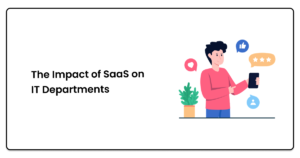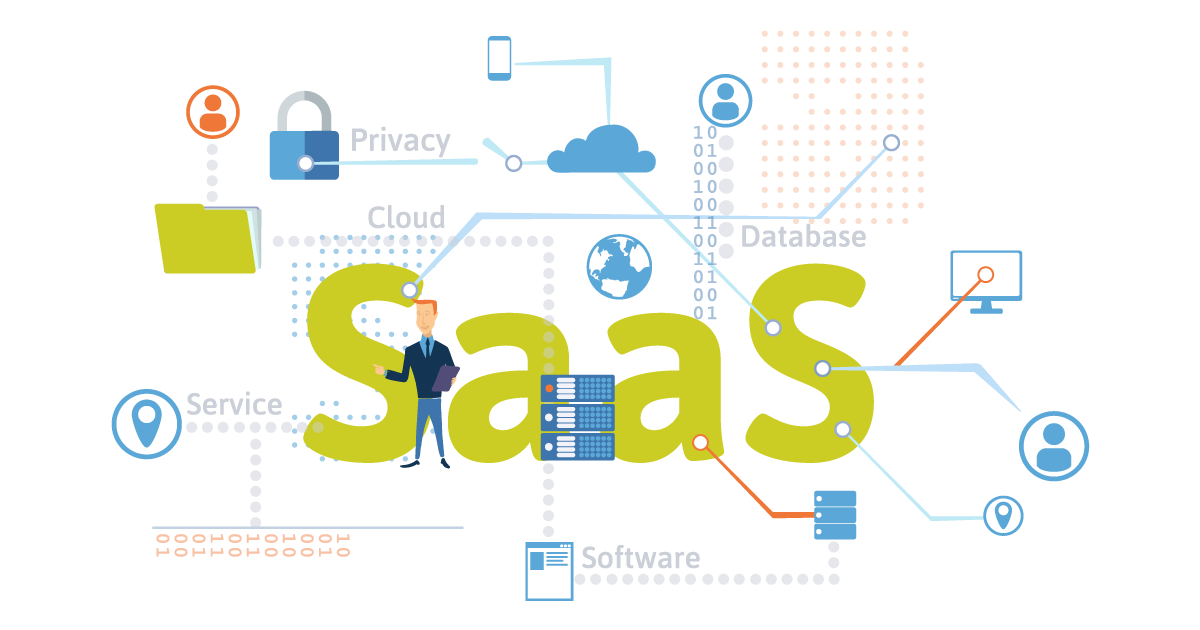Introduction
Software as a Service (SaaS) is a rapidly growing software delivery model that has revolutionized the way businesses use and manage software. Unlike traditional software solutions, SaaS is deliver over the internet and accessed through a web browser, eliminating the need for on-premise installation, maintenance, and upgrades. As a result, SaaS solutions offer numerous benefits, including reduced costs, improved scalability and flexibility, and increased accessibility to the latest technology. However, the rise of SaaS has also brought about significant changes to the role of IT departments, who are tasked with managing and ensuring the security, compliance, and performance of these solutions.

The Role of IT Departments in Managing SaaS Solutions
IT departments play a critical role in managing SaaS solutions, from evaluating and selecting the right SaaS solutions for the business to integrating them with existing IT infrastructure, managing data security and privacy, and training employees on how to use them. Here are some of the key tasks that IT departments are responsible for when managing SaaS solutions:
Evaluating SaaS Solutions:
IT departments must conduct a thorough evaluation of SaaS solutions to ensure they meet the business’s specific needs and requirements. This involves assessing factors such as functionality, performance, scalability, security, and vendor reputation.
Selecting the Right SaaS Solutions:
Once SaaS solutions have been evaluated, IT departments must select the right solutions that align with the business’s goals and objectives. This involves assessing the cost, features, and benefits of different solutions and selecting the ones that offer the most value.
Integrating SaaS Solutions with Existing IT Infrastructure:
IT departments must ensure that SaaS solutions are seamlessly integrated with existing IT infrastructure to ensure compatibility and optimal performance. This involves configuring network settings, setting up user accounts, and establishing data synchronization between SaaS solutions and other software applications.
Managing Data Security and Privacy:
IT departments must ensure that SaaS solutions are secure and compliant with industry regulations and standards. This involves implementing data encryption, access controls, and monitoring tools to prevent unauthorized access, data breaches, and other security risks.
Training Employees on How to Use SaaS Solutions:
IT departments must ensure that employees are trained on how to use SaaS solutions effectively to maximize their benefits and avoid misuse or mistakes that can lead to data loss or security breaches. This involves providing training materials, support, and guidance on best practices and policies.
Benefits of SaaS for IT Departments
While managing SaaS solutions can be challenging, it also offers numerous benefits for IT departments, including:
Reduced Workload for IT Staff:
Since SaaS solutions are managed and maintained by the vendor, IT departments can focus on other critical tasks, such as strategy development, innovation, and customer support.
Scalability and Flexibility:
SaaS solutions can be easily scaled up or down based on business needs, allowing IT departments to adjust resources and capacity as required.
Access to the Latest Technology:
SaaS solutions are typically updated and enhanced regularly by the vendor, providing IT departments with access to the latest features, functionalities, and technologies without additional investment.
Cost Savings:
SaaS solutions eliminate the need for expensive hardware, software, and maintenance costs, allowing IT departments to save money and allocate resources more effectively.
Challenges of Managing SaaS Solutions
While SaaS solutions offer many benefits, they also come with several challenges that IT departments must address, including:
Security Risks and Concerns:
SaaS solutions may pose security risks and vulnerabilities, especially if not managed properly. This can include data breaches, unauthorized access, and other threats that can compromise the business’s data and systems.
Compatibility Issues with Existing IT Infrastructure:
Integrating SaaS solutions with existing IT infrastructure can be challenging, especially if there are compatibility issues or conflicting technologies. This can result in performance issues, downtime, and other problems that can impact the business’s operations.
Vendor Lock-in and Dependency:
Once a business adopts a SaaS solution, it may become dependent on the vendor for ongoing support and maintenance. This can result in vendor lock-in, making it difficult to switch to another solution if needed.
Data Management and Privacy Concerns:
SaaS solutions may store sensitive business data on third-party servers, which raises concerns about data management and privacy. IT departments must ensure that data is encrypted, backed up, and protected from unauthorized access or loss.
Best Practices for Managing SaaS Solutions
To overcome these challenges and ensure effective management of SaaS solutions, IT departments should follow best practices, such as:
Conducting a Thorough Evaluation and Selection Process:
IT departments should conduct a thorough evaluation and selection process to ensure that SaaS solutions meet the business’s needs and requirements. This involves assessing factors such as functionality, performance, scalability, security, and vendor reputation.
Developing a Comprehensive Data Management and Security Plan:
IT departments should develop a comprehensive data management and security plan that outlines policies and procedures for accessing, storing, and protecting sensitive data. This plan should include data encryption, access controls, and monitoring tools to prevent unauthorized access, data breaches, and other security risks.
Establishing Clear Policies and Procedures for Using SaaS Solutions:
IT departments should establish clear policies and procedures for using SaaS solutions to ensure that employees understand how to use them effectively and safely. This includes guidelines on data management, access controls, and acceptable use policies.
Regularly Reviewing and Monitoring SaaS Solutions for Compliance and Performance:
IT departments should regularly review and monitor SaaS solutions for compliance and performance to ensure that they are meeting the business’s needs and requirements. This includes conducting regular audits, performance testing, and security assessments to identify any issues and address them promptly.
Conclusion
SaaS solutions have had a significant impact on IT departments, changing the way they manage and support software solutions. While SaaS offers numerous benefits, it also comes with challenges that must be addressed to ensure effective management and security. SaaS Development Company play a critical role in evaluating, selecting, integrating, and managing SaaS solutions to ensure that they meet the business’s needs and requirements. By following best practices and implementing effective policies and procedures, IT departments can ensure that SaaS solutions are secure, compliant, and performant, helping businesses to achieve their goals and objectives.
